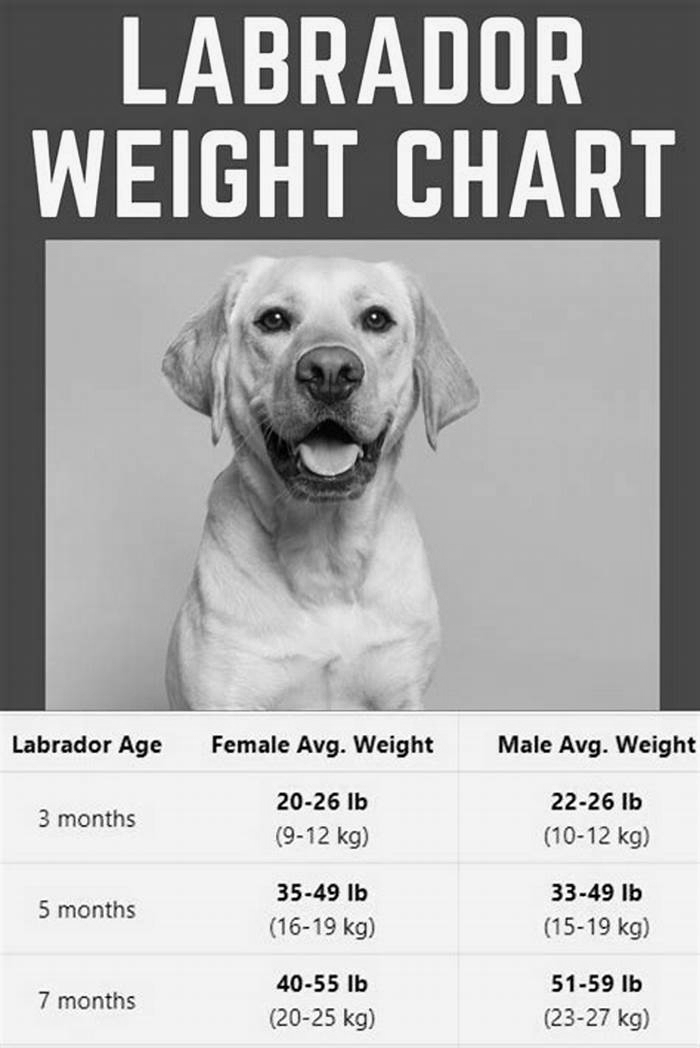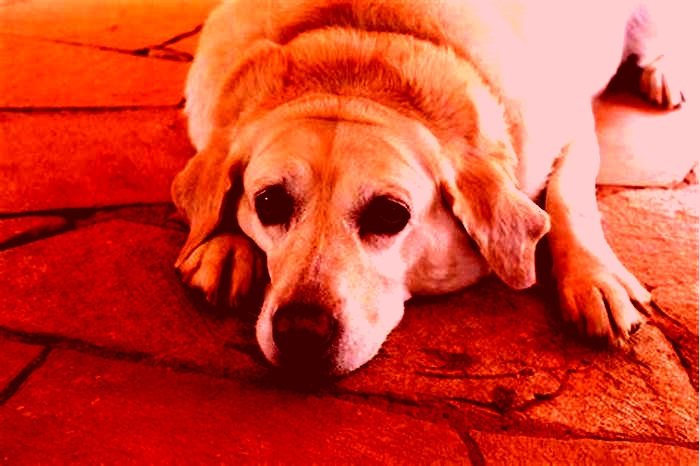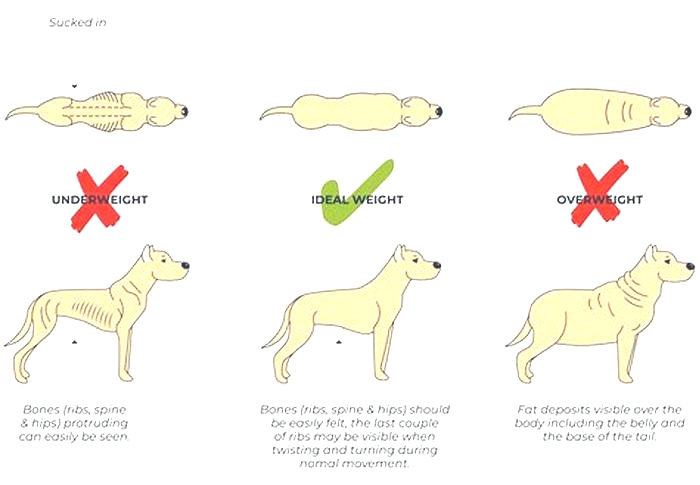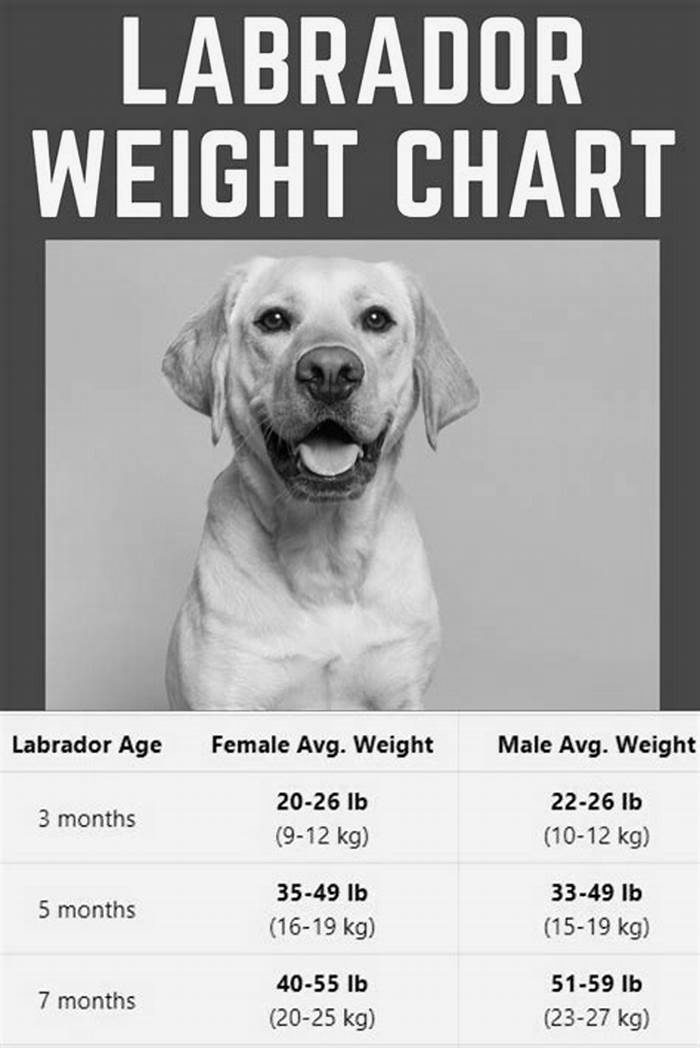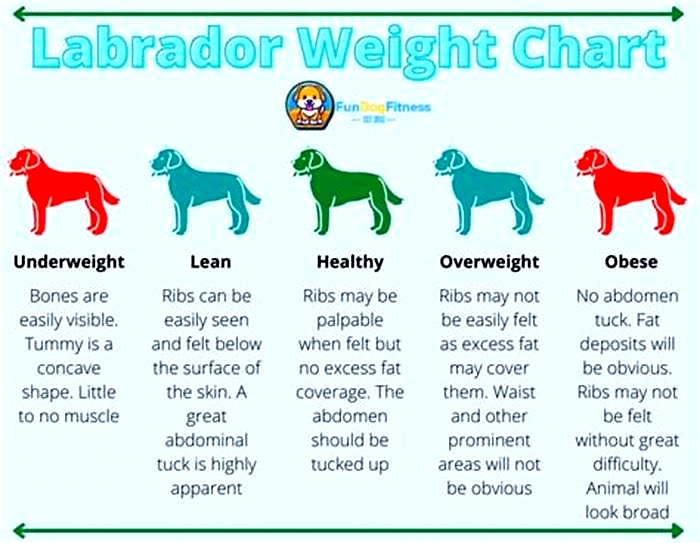How much exercise does a Labrador need to lose weight
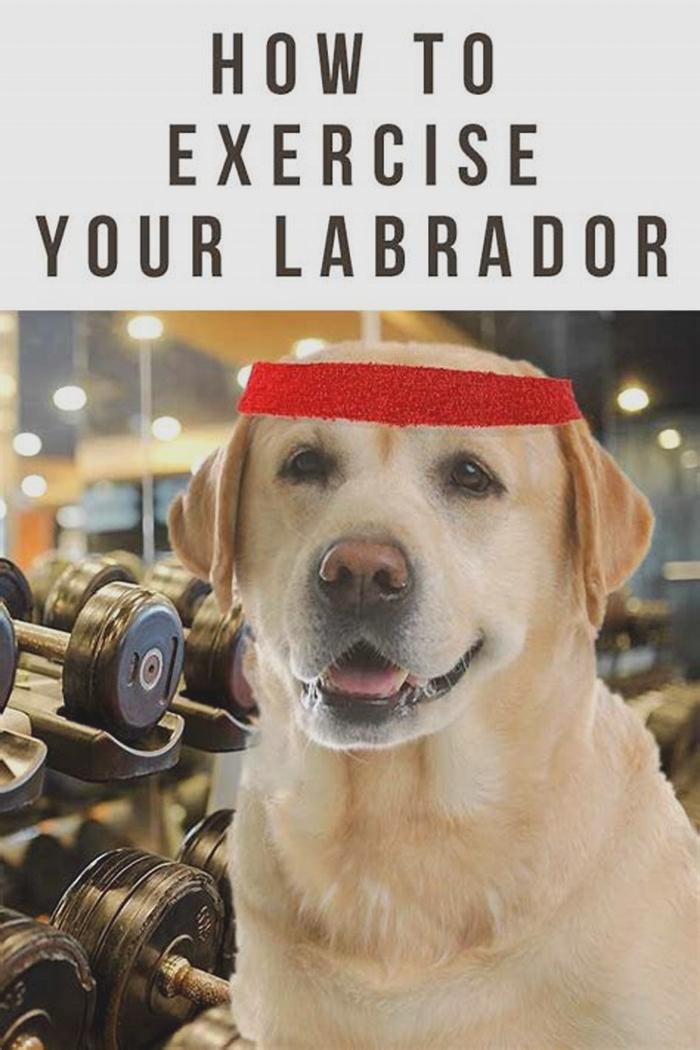
How Much Exercise Does a Labrador Need?
This post may contain affiliate links. We may earn money or products from the companies mentioned in this post.

Just like humans, to stay fit and healthy, Labradors must have exercise.
Whether young or old, big or small, yellow, black, chocolate, from field lines or show lines, your Labrador needs exercise.
It will keep their heart and muscles strong, their mind stimulated and their weight under control.
But how much exercise does a Labrador need?
Labradors Are a High Energy Breed
The Labrador Retriever is a high energy working breed, initially bred for very physically demanding work retrieving game for hunters.
This would involve all day hiking, running and swimming in sometimes difficult conditions.
So Labrador Retrievers were bred to have lots of energy and be very active. And though their main role in life today is as a family pet, they still have those same genetics that made them suited to their original role.
This means they have a body built for and one that craves a lot of physical activity and if you dont provide a way for them to release their pent-up energy, they may very well find a release for it themselves.
QUICK TIP: One of our favorite inexpensive toys for exercising our Labs is the Chuckit! Dog Ball Thrower. Yes, you can throw a tennis ball extra far with the Chuckit, but two reasons why I love it: 1. You dont have to touch a slobbery ball and 2. You dont have to bend over to pick up the ball (great for my old body).
What Happens If You Dont Exercise Your Labrador Enough?
If you fail to exercise your Labrador sufficiently, theyll become bored and absolutely bursting at the seams with pent-up energy.
In this state they will often resort to destructive behaviors such as digging and chewingand will often be very restless, may bark excessively and try to escape your home and garden at every opportunity.
Its now that many people start to use the words disobedient and uncontrollable when describing their Labrador, when all thats needed is to cater for their needs.
Insufficient exercise can also lead to weight problems with Labradors. They tend to put on weight very easily being voracious eaters and if they arent exercised enough they soon pile on the pounds.
Excess weight is a problem because it can lead to all sorts of problems such as damage to their joints (hips and elbows), heart disease, increased blood pressure and increases the risk of diabetes.
So a lack of exercise leads to behavioral problems, hyperactivity and possibly an assortment of health problems. So its very important to exercise them well!
So How Much Exercise Does a Labrador Need?
Theres no absolute concrete answer to this as it depends on your Labradors age, their overall health and even their genetics as Labradors from a working line will usually need more exercise than those from show lines.
However, as a general rule of thumb, a normally healthy adult Labrador Retriever will need 1 hour of exercise every day. The more relaxed Labs just 45 minutes per day, the more energetic 1.5 hours+.
This can be made up of running, swimming, playing fetch, jogging alongside youanything that goes beyond a gentle walk.
But if the first consideration is your Labradors age, how much do puppies and the elderly need?
QUICK TIP: In our early days we would run with our Labrador Retriever mix, Linus. Yep, I used to run marathonsso long agoAnyhoo, we liked using a hands free leash like the Tuff Mutts Hands Free Leash. Nice for long runs with your Lab.
How Much Exercise Does a Labrador Puppy Need?
A Labrador puppy doesnt need any form of structured exercise during its first 3 months as theyre only small, tire quickly and are sufficiently exercised with just their normal play.
During the first 3 months, its more important not to over-exercise your pup.
If you have older dogs or children, the puppy may well try to keep up with them and over-exert themselves, playing to exhaustion and damage their developing joints.
So keep an eye on them and interrupt play if need be, to give them plenty of rest.
From 3 months and older, theres a much spoken rule of thumb called the five minute rule I found on numerous sites on the web during research, and seen in an article by the UK kennel club:
A good rule of thumb is a ratio of five minutes exercise per month of age (up to twice a day) until the puppy is fully grown, i.e. 15 minutes when three months old, 20 minutes when four months old etc. Once they are fully grown, they can go out for much longer.
-The UK Kennel Club
This means structured, deliberate exercise where you take time out to exercise your puppy properly and doesnt include natural free play time.
Its important to begin structured, planned exercise as early as 3 months in order to get your Labrador used to a regular exercise routine with you.
The 5 minute rule should be sufficient to keep your lab puppy fit, burn off excess energy yet not over-exert them and cause possible developmental issues.
Continue the 5 minute rule until your puppy is at least one year of age where you can then begin to exercise them more vigorously.
How Much Exercise Does an Elderly Labrador Need?
This is highly dependent on your labs overall health and can vary wildly from one Labrador to another.
Some labs may need to slow down from the 7th year onwards, while others remain extremely active beyond their 10th year.
As Labradors get older, many develop arthritis, dysplasia and other health issues that can prevent a Labrador from enjoying or needing exercise as much as they used to when young and healthy.
And exercise can aggravate certain health problems so please ask your vet for exercise advice if your Labs been diagnosed with any health issues.
For an elderly Labrador thats slowing down with age and possibly suffering with stiffening joints, gentle walking and especially swimming that takes the weight off their limbs are the best forms of exercise.
Be mindful of asking less of your Lab in old age. They will likely still try to chase a tennis ball all day and hike mountains just to please you, even if it may be doing them more harm than good. Try not to put them in this position.
As your Labrador ages, you need to be more observant, looking for changes in their movement, excessive panting, slowing down, feeling tired. And during grooming sessions and massage, check for any painful spots indicative of sore joints or other problems.
QUICK TIP: As your Labrador gets older you might consider glucosamine for dogs to help relieve some of the stiffness in his joints. We noticed Linus was stiff getting up in the morning and decided to try adding glucosamine to his diet. We saw a noticeable difference a few days later and an added spring in his step.
Signs Your Labrador Isnt Getting Enough Exercise
Its relatively easy to tell when your Labrador isnt getting enough exercise and knowing the signs will allow you to adjust accordingly.
If your Labrador tears around your home like a tornado. If they chew, bark and dig what seems like all the time.
If they dont listen to commands theyve been reliably trained to follow, then its fairly safe to say they arent getting enough exercise.
Also, if you Labradors putting on excess weight and you arent over-feeding them, including table scraps and treats, then its also likely they arent getting enough exercise.
However, if your Lab can relax around the home, isnt destructive and follows your commands, looks athletic and not overweight, then its fairly safe to say theyre being exercised enough.
If your Lab displays any of the restless and destructive symptoms described above, try increasing their levels of exercise for a few days and see if their behavior problems improve. You may be pleasantly surprised :-)
QUICK RECOMMENDATION: Earlier we recommended the Chuckit! which we love. However, if you have money burning a hole in your pocket you might want to check out PetSafe Automatic Ball Launcher. We dont personally own one, but we did see an adorable Golden Retriever demoing the launcher at a conference we attended recently.
Speaking of automatic ball launchers this is one of our favorites:
Its great when your dog takes the initiative to exercise himself. :)
Conclusion
Labradors are energetic and need lots of regular exercise. If they dont get it, then you, your ears, your shoes, furniture and flower beds will soon know about it!
Dont over-exercise a puppy, and be observant of and mindful to an elderly Labradors ailments and needs. Over-exercising very young and elderly Labradors can do more harm than good.
For your adolescent and adult Labrador, exercise them well. Theyll be able to out-perform you so its unlikely youll exercise them too much, they can go all day.
As a general rule of thumb, aim for 1hr per day and scale this up or down depending on your Labradors individual needs.
This could mean 45 mins for the more sedate and elderly, or 1.5 hours+ for the more energetic and highly strung.
Particularly if theyre restless and destructive, try upping the amount of exercise you provide and their behavior should improve.
And at the end of the day, think of it like this: You have the best exercise machine to rival that of any gym to keep you fit and healthy yourself.
Walking, hiking, throwing, swimmingA lab will relentlessly work you and make you go nuts if you dont get outside for your 1hr+ of exercise together per day.
And hey, what fun!!! What better motivation and need is there to keep yourself in shape? :-)
Anything to add?
As always, wed love to hear your feedback, comments and any thoughts you may have on the subject of how much exercise does a Labrador need?.
Do you mostly agree with the above? What are your experiences with Labradors youve owned yourself? Please let us know in the comments section below.
Save To Pinterest:
Top Picks For Our Dogs
- BEST PUPPY TOYWe Like: Calmeroos Puppy Toy w/ Heartbeat and Heat Packs - Perfect for new puppies. Helps ease anxiety in their new home.
- BEST DOG CHEWWe Like: Bones & Chews Bully Sticks - All of our puppies love to bite, nip, and chew. We love using Bully Sticks to help divert these unwanted behaviors.
- BEST DOG TREATS We Like: Crazy Dog Train Me Treats - One of our favorite treats for training our service dog puppies.
- BEST FRESH DOG FOOD We Like: The Farmer's Dog - A couple months ago we started feeding Raven fresh dog food and she loves it! Get 50% off your first order of The Farmer's Dog.
For a list of all the supplies we get for our new service dog puppies check out our New Puppy Checklist on the PuppyInTraining.com blog.
How Much Exercise Does a Labrador Need? was last modified: July 28th, 2020 by LTHQ
How Much Exercise Does a Labrador Need? A Practical Guide for Owners
When it comes to Labradors, exercise isnt just a part of their routine; its a vital aspect of their well-being. Known for their energy and enthusiasm, Labradors thrive when their physical and mental exercise needs are met. In this comprehensive guide, well explore how much exercise is optimal for a Labrador at different stages of life and why its crucial for their overall health.
Understanding Labrador Exercise Requirements
Labradors are a high-energy breed, originally bred for physically demanding tasks like retrieving game. This ancestry contributes to their need for regular, vigorous exercise. Without adequate physical activity, Labradors can develop behavioral issues and health problems such as obesity, joint issues, and anxiety. Typically, an adult Labrador requires at least an hour of exercise each day, though this can vary based on their age, health, and energy level.
Exercise Needs of an Adult Labrador
For an adult Labrador, a mix of activities is beneficial. This can include brisk walks, playtime in a secure area, swimming, and interactive games that also provide mental stimulation. These activities not only keep them physically fit but also engage their minds, preventing boredom and related behavioral problems.

Labrador Puppies: Tailoring Exercise to Their Age
Exercise for Labrador puppies should be carefully managed. Their bones and joints are still developing, and too much intense activity can lead to future health issues. A good rule of thumb is five minutes of exercise per month of age, twice a day. As they grow, you can gradually increase the duration and intensity of their exercise. Puppies typically have bursts of energy followed by periods of rest, so its important to let them set their own pace during play.
Caring for an Elderly Labrador: Adjusting Exercise Routines
As Labradors age, their exercise needs change. Senior Labradors may still be enthusiastic about walks and play, but their stamina and joint health may not be what it once was. Its essential to tailor their exercise to their capabilities, focusing on gentle walks and low-impact activities to maintain mobility without causing discomfort. Regular, moderate exercise can help manage weight and keep joints flexible, which is especially important for aging dogs.

The Risks of Under-Exercising Your Labrador
Under-exercising a Labrador can lead to a host of problems. I learned this firsthand with my own Labrador, Max. Before I understood his exercise needs, Max would often chew on furniture and display signs of anxiety. Insufficient exercise can result in obesity, which brings its own set of health issues like diabetes and joint problems. Behavioral issues such as excessive barking, digging, and hyperactivity are also common in under-exercised Labradors. Once I increased Maxs daily exercise, I noticed a significant improvement in both his behavior and health.
Can You Over-Exercise a Labrador?
While exercise is essential, there is such a thing as too much, especially for certain Labradors. Over-exercising can lead to exhaustion, heatstroke, and joint damage, particularly in puppies and older dogs. Its crucial to watch for signs of fatigue and to provide ample rest. Remember, each Labrador is unique; whats excessive for one might be adequate for another. For Max, I learned to read his cues slowing down on walks or lagging behind were signs that we needed to take it easy.
Ideal Walking Distances and Durations for Labradors
Determining the ideal walking distance and duration depends on your Labradors age, health, and fitness level. For most healthy adult Labradors, a walk of 30 minutes to an hour is usually sufficient. However, energetic individuals might require longer or more intense walks. For Max, two 45-minute walks a day, combined with some playtime, keeps him happy and fit. Its always good to start with shorter walks and gradually increase them, observing how your dog responds.

Recognizing and Responding to Your Labradors Exercise Needs
Every Labrador communicates their exercise needs differently. Signs of insufficient exercise can include restlessness, weight gain, and destructive behavior. Conversely, a dog thats been over-exercised might be lethargic, uninterested in activities they usually enjoy, or show signs of discomfort. Its about finding that sweet spot. With Max, a happy medium was essential. When hes well-exercised, hes calm, obedient, and sleeps soundly.
Conclusion
The right amount of exercise for a Labrador varies, but finding this balance is key to their well-being. Remember, a happy Labrador is an exercised Labrador. Regular, appropriate exercise will ensure your furry friend stays healthy, happy, and well-behaved.

